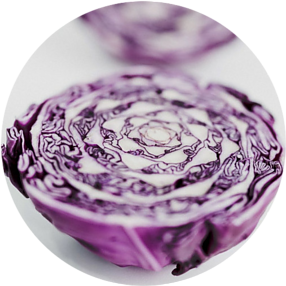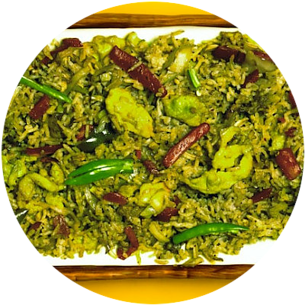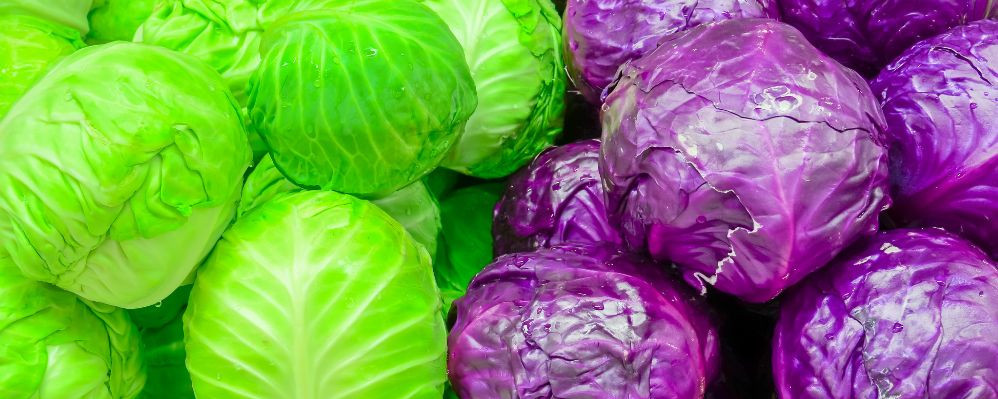Is eating cabbage healthy? Yes, it is. OK, end of the post. Let’s all go home and start eating cabbage. Just kidding! Let’s back up our “healthy” claim by examining in a little more detail just how amazing a food cabbage really is!
Cabbage and Things That Taste Like Cabbage
We had a gardener friend some years ago who moved to north-central British Columbia. Someone asked him about gardening in B.C. The only problem, he said, was that the only crops that would grow were cabbage – and things that taste like cabbage!
Maybe you’re also in the group of people who thinks you don’t like cabbage, but it might be worth a second look, because not only is cabbage very healthy, it’s also very inexpensive – and can be used in many different ways.
And there are many different varieties! Brussels sprouts are a form of cabbage; there’s red cabbage, green cabbage, bok choy, kale, and Savoy cabbage, for example.
Why Is Cabbage Healthy?
Cabbage could be considered a superfood, for sure. It’s not as popular as kale or spinach, but it’s a nutritional goldmine. Here are some of the benefits:
- May lower blood pressure. Red cabbage, in particular, is high in potassium, which is an important mineral and electrolyte
 that helps to regulate blood pressure by counteracting the effects of sodium in one’s body. Sodium seems to have a negative effect on blood pressure, and potassium counteracts sodium! So you can both reduce your sodium intake and increase your potassium intake by eating cabbage. One cup of cabbage can provide as much as 6% of your recommended daily value of potassium.
that helps to regulate blood pressure by counteracting the effects of sodium in one’s body. Sodium seems to have a negative effect on blood pressure, and potassium counteracts sodium! So you can both reduce your sodium intake and increase your potassium intake by eating cabbage. One cup of cabbage can provide as much as 6% of your recommended daily value of potassium. - May help with weight loss. You may have heard of the at-least-somewhat famous cabbage soup diet. It has its pros and cons – not getting into that particular diet here – but the point is that cabbage is very low in calories and very nutritious. Cabbage contains 22 calories per cup. Look at it this way: If you ate nothing but cabbage (NOT recommended!), you could eat 10 cups, and get only 220 calories out of it. 20 cups would be 440 calories, and a 1200-calorie diet of all cabbage would be, let’s see – 1200 divided by 22 – 54 cups of cabbage! Or two Big Macs… So since no one will ever eat 54 cups of cabbage per day, you can see how you can fill up on cabbage to your heart’s content without even thinking about calories.
- Digestive and gut health. If you eat fermented cabbage in the form of sauerkraut or kimchi, you are getting natural probiotics that support harmonious gut bacterial balance. This has been associated with improved digestion, mental health, and immune function. Even regular non-fermented cabbage is great for digestion. It contains lots of fiber, which helps promote bowel regularity. Just a note, though; if you haven’t normally eaten cabbage in the past, don’t eat entire heads at one time. If you do, you can probably expect some flatulence or digestive discomfort! So start in easy…
- Vitamins C and K. Cabbage is very high in natural Vitamin C, which is a known antioxidant, has potential cancer-fighting properties, and plays a major role in many important functions in the body. Both green and red cabbage are great Vitamin C sources – red cabbage is especially so. And Vitamin K is critical for the regulation of blood clotting. Cabbage has 56% of the recommended daily value of Vitamin K1 in just one cup!
- Cabbage could help lower cholesterol levels, which can increase the risk of heart disease. Two substances in cabbage come to the fore here: Soluble fiber binds with bad cholesterol (LDL) to keep it from being absorbed in the intestinal tract. Around 40% of the fiber in cabbage is soluble. The other factor is substances in cabbage known as phytosterols. Phytosterols have structurally similar characteristics to cholesterol, and they also reduce “bad” cholesterol by blocking cholesterol absorption in the gut.
- Cabbage may have positive benefits for heart health. Red cabbage in particular contains powerful substances called anthocyanins, which are plant pigments that have been shown by studies to reduce the risk of heart disease. They also seem to have a positive effect in reducing blood pressure, inflammation, and “bad” cholesterol.
- Cabbage may help fight cancer because it’s a cruciferous vegetable. These vegetables seem to have cancer-fighting properties. Cabbage, in particular, contains sulforaphane, a substance that has been studied at length, and may have the potential to inhibit cancer cell growth and reduce the risk of lung, breast, and colon cancers.
How To Eat Cabbage

Cabbage is very versatile!
One of the most common – and delicious – ways to eat cabbage raw is in the form of coleslaw. An easy (and very simple!) version of coleslaw simply uses shredded cabbage and a Miracle Whip-style salad dressing. But there are a lot of coleslaw recipes out there, feel free to explore!
Of course, you can also cook cabbage with salt, pepper, and butter – also very tasty! Cabbage tastes great with cheddar cheese.
We have many times taken pre-shredded coleslaw mix, put it on a plate, and cooked it until soft in the microwave, then add dill powder, onion powder, season salt (like Herbamare), a ranch-style dressing, and some black-eyed beans or chickpeas. Delicious!
These are just a couple of suggestions… Of course, if you want to preserve as much health quality as possible in your cabbage when you eat it, you will want to be sure what you add to the cabbage doesn’t detract from the health value of the cabbage – for example, using too much salt or margarine.
Then there’s also sauerkraut, which is almost a “health food” in its own right. If you are going to make your own, it takes some preparation – or you can buy it in jars in the store. Kimchi I know nothing about, I’ve heard it’s great! Use your imagination.
Budget-Friendly
Is cabbage budget-friendly? Yes, very! It’s one of the “health foods” that doesn’t have a “health-food price.” The least expensive way to buy cabbage is to buy it by the head, and then shred or cut it up. You can use a large kitchen knife to cut it up, or you can shred it with a cabbage slicer like this one, for example.
We often buy cabbage as coleslaw mix, as already mentioned – which is also very inexpensive, then you can eat it as coleslaw or cook it, whatever you prefer!
In Summary…
Cabbage is a superfood, full of nutrition with disease-fighting properties, and it is very affordable and versatile. If you’re on a budget, unless you absolutely despise “cabbage and things that taste like cabbage,” it is a very simple food that you should not ignore in your quest for health on a budget.
If you have any questions or comments on the content of this post, please feel free to share in the space below!


Our farm market has great small fresh cabbages right now. I made coleslaw with one last night with some onions and homemade dressing. Used Mayo, horseradish mustard, vinegar and lemon. Really good.
Sounds like an awesome combination!
Hi Daniel,
I really enjoyed reading your article on the health benefits of cabbage. I’ve always been a fan of cabbage, but I didn’t realize how many health benefits it has! I’m especially interested in the fact that cabbage can help lower blood pressure and cholesterol levels. I’m going to start incorporating more cabbage into my diet.
I also appreciate the tips on how to eat cabbage. I’ve never tried sauerkraut or kimchi, but I’m going to give them a try. I think I’ll start with coleslaw, though, since that’s a familiar dish.
For sure! It’s been a big “go-to” food for us, I know! Thanks for the comment…